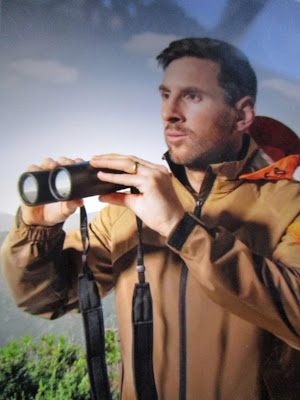 |
| Inspirational - a tale of courage and determination |
IF your beloved partner appears to be wasting away before your eyes, what should you do?
Specifically, his condition is corticobasal degeneration (CBD) - a rare and progressive neuro-degenerative disorder likely to cause problems with movement, speech, cognition and swallowing, plus a raft of subsidiary symptoms.
How author Raynor Winn and her rapidly-ailing husband, Moth, respond to this challenge provides the content for her highly inspirational book, Landlines.
Instead of choosing to become as comfortable as possible at their home in Cornwall, Moth agrees to her suggestion that they should undertake an expedition - not to some exotic sunshine island but a gruelling hike through Scottish mountains, starting in the Highlands.
And, off they go, rucksacks heavily laden with camping equipment on their backs.
One thing leads to another. That brutally arduous journey having been completed, they embark on the Pennine Way, then Offa's Dyke Path, then Chepstow to Plymouth.
Thence to their home in Cornwall along the South West Coast Path from Plymouth to Polruan.
How can that possibly have been achieved given that, before they started, 60-year-old Moth could scarcely walk from one room to another - the dreadful neuro-degenerative disease having left him "lost in the shell of a body that can no longer function"?
Medically and scientifically, there is no explanation. By what amounts to some sort of miracle, Moth, incredibly, was in far better physical and mental shape after they returned home than before they left.
This is confirmed by brain scan results provided by his consultant at the local hospital.
In the conclusion to her book, Raynor can only speculate about how extreme physical exertion, accompanied by determination of spirit, can seemingly overcome insurmountable odds.
She writes: "We do know that areas of the brain can grow in response to physical activity and that neuroplasticity exists although we know very little about it."
What about the birds they encountered as they walked?
Neither the author nor her husband are particularly knowledgeable about individual species, but their spirits seem to have been recharged every time they saw or heard wheatears, cuckoos, skylarks, dippers or raptors of whatever species.
However, they had a slight downer on golden plovers because, in Scotland, their calls kept them awake at night.
This is a captivating briskly-paced book, but not without shortcomings - for instance, the absence of underlying humour and author's readiness to take a pop at anything that doesn’t meet with her approval, from beach donkey rides to cricket.
Worst of all, she never misses an opportunity to commend her earlier book, The Salt Path, putting the praise into the words of those they meet on their travels.
This self-adulation serves to seep away some of the admiration for the courage, enterprise and resilience that are impressive characteristics both of her own make-up and that of her valiant husband.
After all, no one warms to someone who blows his/her on trumpet.
To end on a positive note, it is hard not to be reminded of lines in a poem about death by Dylan Thomas.
Do not go gentle into that good night.
Old age should burn and rave at close of day;
Rage, rage against the dying of the light.
Landlines is published by Michael Joseph at £20.










.JPG)


.JPG)


















.JPG)









.JPG)


.JPG)
.JPG)
